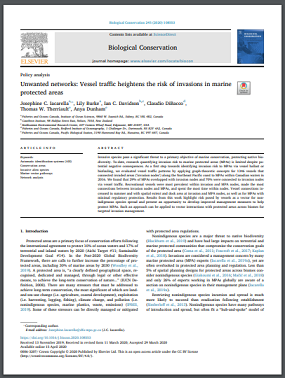
Invasive species pose a significant threat to a primary objective of marine conservation, protecting native biodiversity. To-date, research quantifying invasion risk to marine protected areas (MPAs) is limited despite potential negative consequences. As a first step towards identifying invasion risk to MPAs via vessel ballast or biofouling, we evaluated vessel traffic patterns by applying graph-theoretic concepts for 1346 vessels that connected invaded areas (‘invasion nodes’) along the Northeast Pacific coast to MPAs within Canadian waters in 2016. We found that 29% of MPAs overlapped with invasion nodes and 70% were connected to invasion nodes via vessel traffic. Recreational vessels were most prevalent within invasion and MPA nodes, made the most connections between invasion nodes and MPAs, and spent the most time within nodes. Vessel connections increased in summer and with spatial extent and dock area at invasion and MPA nodes, as well as for MPAs with minimal regulatory protection. Results from this work highlight risk posed by vessels as a vector for nonindigenous species spread and present an opportunity to develop improved management measures to help protect MPAs. Such an approach can be applied to vector interactions with protected areas across biomes for targeted invasion management.














